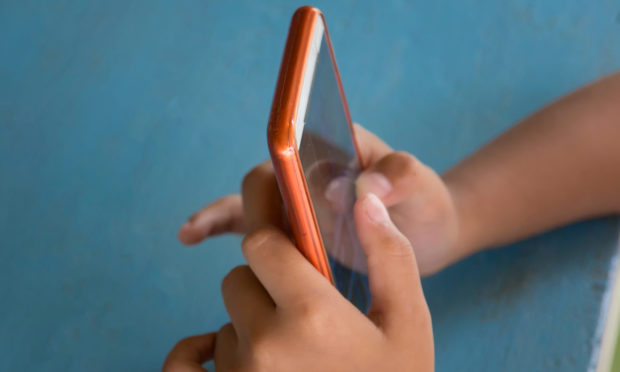Our children are currently spending more time on a screen than ever. Schoolwork is done online, we chat to friends on Zoom or FaceTime and social media keeps us sane. But it can all go wrong in a heartbeat, no matter how technologically savvy you think you are.
I know a child who, aged 11, found an old mobile phone his parents had forgotten about in the bottom of a drawer. He sneaked it into his bedroom and the old phone, with no filters, meant his immature misspelled searches for men’s and women’s anatomy took him to hardcore porn sites.
Maybe that triggered what happened next or maybe it was just his hormones kicking in with a bang, but shortly afterwards he sent a barrage of messages to a school friend asking her to send him topless pictures. To him it was harmless banter but to a 12-year-old girl sitting in her bedroom, it was sexual harassment.
At this point his parents decided he was too immature for a phone. However, the pressure from outside was intense. Life at school revolves around phones. Being without a phone made him seem weird. I remember there was a girl at my school who didn’t have a TV. She was the smartest girl in the year but couldn’t join in our playground chat. She was lovely but definitely not cool which, after all, is all that matters when you are 13.
So his parents relented and gave the phone back, with restrictions. They installed Google’s Family Link to control screen time and filter out adult content. Then, one evening just before Christmas last year, the boy’s father did a spot check. His son had sneakily taken a picture of his mum naked in the shower and texted it to an unknown number of his friends for a laugh. He had deleted the picture afterwards but it was in a remote part of the phone’s memory. When confronted, the boy said he had only sent it to one child but there was no way of knowing if that was true.
The boy’s parents expected the school to swing into action but clearly, preventing a naked picture going viral was not top of their pre-Christmas priority list.
Nothing was done to find out who had received the text or to stop it being passed on. After more than 24 hours his mother rang for an update only to find that they had all gone for their Christmas lunch and would not be back until after the weekend.
Eventually, after a week of inaction, she used her son’s phone to message the child who had been sent the image and asked him to get his parents to call her. Thankfully they did and assured her the image had been deleted.
I would prefer it if my children have no unsupervised access to the internet or social media but I cannot peer over their shoulders all day. We have installed all the filters and blocks that we can but it is simply impossible to stop them from abusing our trust if they want to.
I know several parents who have had similar experiences and also heartbreaking stories about children who post a misjudged comment on social media and lose all their friends.
Many families are too embarrassed to talk about it and some have very negative reactions when they do. Parents who have been through the same experience are often blamed for allowing it to happen yet most statistics on pornography use say that the average age of a child’s first exposure to pornography is 11.
We have strict controls at home but we know our 13-year-old son has been sent porn by an older pupil during the school day.
My advice? Install filters and system blocks but don’t rely on them. The non-technical solution is the best: keep all devices, including phones, in communal areas where your parental radar is more likely to alert you to odd behaviour. Know all your children’s passwords and do spot checks. I would still recommend parental controls like Google Family Link.
You will be amazed what 18-rated games your angelic little darling has downloaded without your knowledge. Apps like Family Link mean you have to approve what they install and can see how much time they are spending on screens – as well as having the power to set non-screen time and remotely switch their devices off and on. It’s the dream app for helicopter parents.
When the kids do go back to school, don’t assume that it is a supervised environment. Use this time with your children to teach them about the severe consequences of one silly text or comment.
Eleanor Bradford is a former BBC Scotland health correspondent who now works in communications in the education sector

